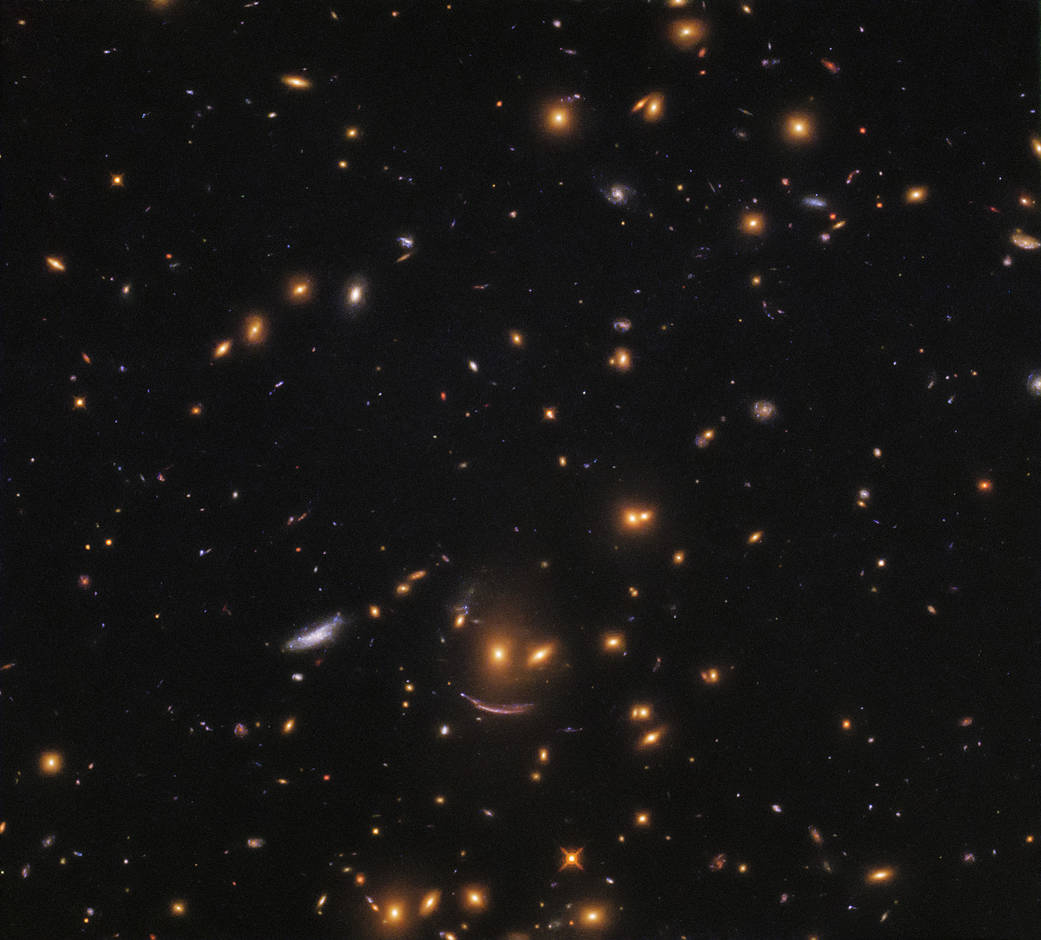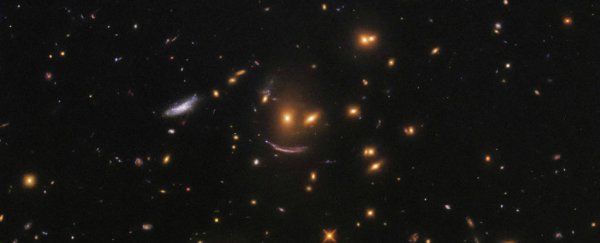Staring at the night sky can be a mind-boggling, existential experience, so every once in a while, it's nice to see a friendly face staring back at us.
In a new image from NASA's Hubble Space Telescope, the stars have aligned to give us just that.
Here, nestled among a sea of galaxies, is a clear and unmistakable smiley face - two bright blobs suspended above a streak of light.
 (ESA/Hubble/NASA)
(ESA/Hubble/NASA)
This happy coincidence belongs to the galaxy cluster SDSS J0952+3434, and each of the three lights are from star systems far, far away.
The sweeping arc of light that makes up the mouth appears to be pulled out of shape due to the strong gravitational forces distorting its light.
"The lower, arc-shaped galaxy has the characteristic shape of a galaxy that has been gravitationally lensed - its light has passed near a massive object en route to us, causing it to become distorted and stretched out of shape," NASA explains.
When stars are born, they emerge from giant clouds of gas, called stellar nurseries. Over time, these nurseries become unstable, succumbing to gravitational forces until they become the seeds that give birth to new stars.
Peering into the lives of other galaxies can shed light on how gas is transformed into giant stars through time and space.
This is exactly what Hubble was doing when it stumbled across this cute little face in a region rich with stellar nurseries.
By analysing the luminosity, size and formation rate of young stars in images like these, researchers at NASA hope to better understand how stars are formed in the cold and dusty corners of the Universe.
The image was taken using the Hubble Space Telescope's Wide Field Camera 3 (WFC3).
